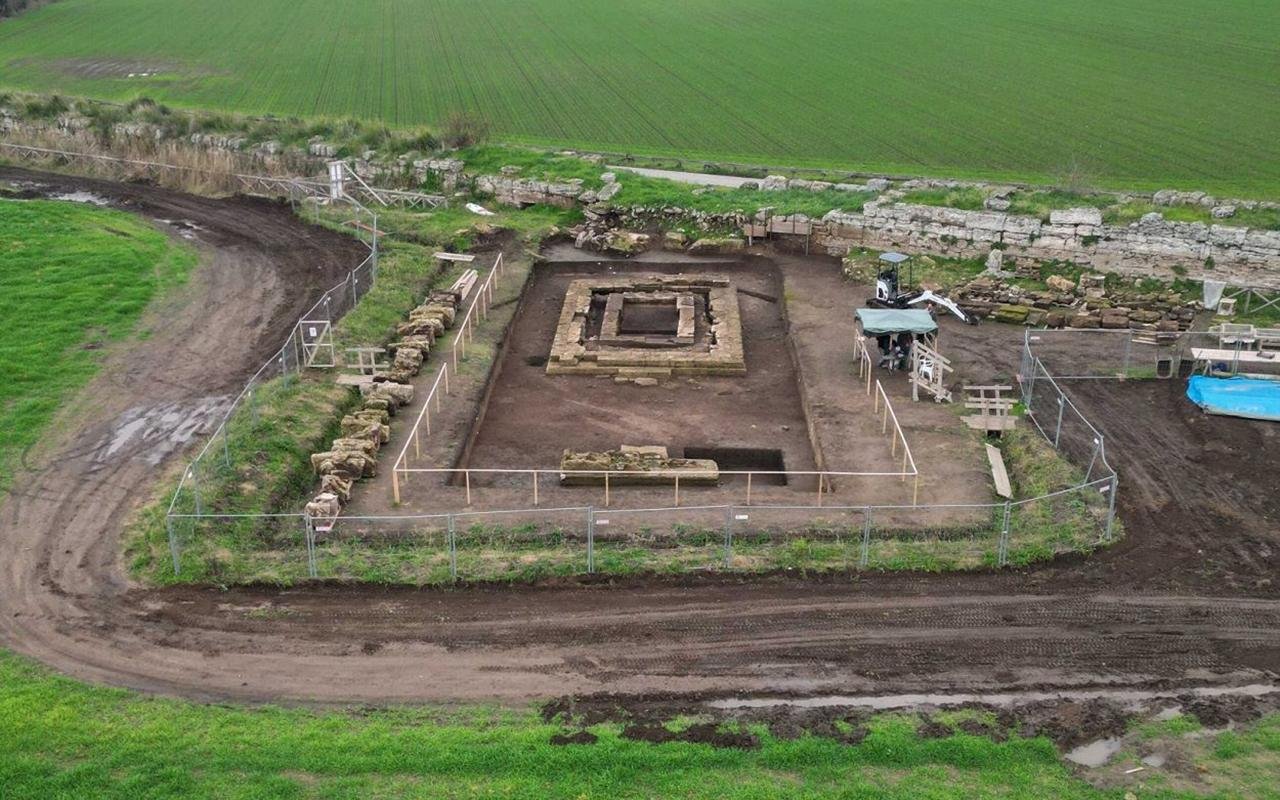Researchers have unearthed two unknown Doric-style temples in the ancient city of Poseidonia-Paestum, located in the present-day Province of Salerno, Campania, Italy.
 Credit: Italian Ministry of Culture
Credit: Italian Ministry of Culture
Poseidonia, originally founded as a Greek colony around 600 BCE, emerged as a significant religious center, boasting three expansive temples dedicated to Hera and Athena, constructed in the Archaic interpretation of the Greek Doric order. Following the Pyrrhic War in the 3rd century BCE, Poseidonia fell under Roman rule and was renamed Paestum.
Italian Ministry of Culture’s press announcement highlighted that the recent excavation efforts in the western section of Poseidonia, near the ancient city walls, unearthed two temples in the Doric style.
One temple, dating back to the early 5th century BCE, revealed well-preserved architectural remnants of the stylobate, measuring 11.5 x 7.6 meters. This temple features four-sided peristatis columns surrounding the inner sanctuary (cella), potentially housing cult images or statues representing revered deities.
 Credit: Italian Ministry of Culture
Credit: Italian Ministry of Culture
Researchers revealed that beneath the temple, 14 fragmentary Doric capitals and other architectural materials had been repurposed, indicating an earlier structure with similarities to the Temple of Hera. This suggests the presence of another, more modest-sized temple dating back to the 6th century BCE, potentially replaced by the larger temple due to reasons yet to be determined. Researchers suggest that architectural features and stonework from this collapsed temple were recycled into the construction of the newer temple.
“The recent discoveries confirm that there is still a lot to do in Paestum [Poseidonia] in terms of excavations and research. After decades of research, the Ministry of Culture is giving impetus to notable initiatives,” emphasized Gennaro Sangiuliano, the Minister of Culture.
Tiziana D’Angelo, the director of the Archaeological Park of Paestum and Velia, expressed enthusiasm, describing the findings as “exceptional” and stressing their significance in reconstructing the ancient history of Poseidonia.
 Ancient Greek temple of Poseidon in Paestum, Italy. Paestum contains three of the best-preserved ancient Greek temples in the world. Credit: Oliver-Bonjoch, Wikimedia Commons
Ancient Greek temple of Poseidon in Paestum, Italy. Paestum contains three of the best-preserved ancient Greek temples in the world. Credit: Oliver-Bonjoch, Wikimedia Commons
Paestum’s archaeological site, previously famous for three well-preserved Greek temples of Doric order dedicated to Hera, Athena, and Poseidon, has now gained additional significance. The newly unearthed temples provide critical data for understanding the evolution of Doric architecture in Poseidonia and Magna Graecia.
Reflecting on the broader implications of the discoveries, Minister Gennaro Sangiuliano emphasized the ongoing potential for archaeological exploration and research in Paestum. The Ministry of Culture has spearheaded initiatives such as the reopening of the National Archaeological Museum and the “Elea: The Rebirth” exhibition, offering interactive learning about the ancient Greek city of Elea.
Gennaro Sangiuliano acknowledged the importance of expanding on these discoveries, highlighting ongoing initiatives such as the reopening of the National Archaeological Museum and the interactive learning exhibition “Elea: The Rebirth.” This initiative aims to provide an engaging learning experience for tourists and locals alike, emphasizing the rich history of the ancient Greek city of Elea.
This remarkable discovery adds substantial depth to our understanding of the Magna Graecia region, providing crucial data for comprehending the origins and urban development of the ancient city.





